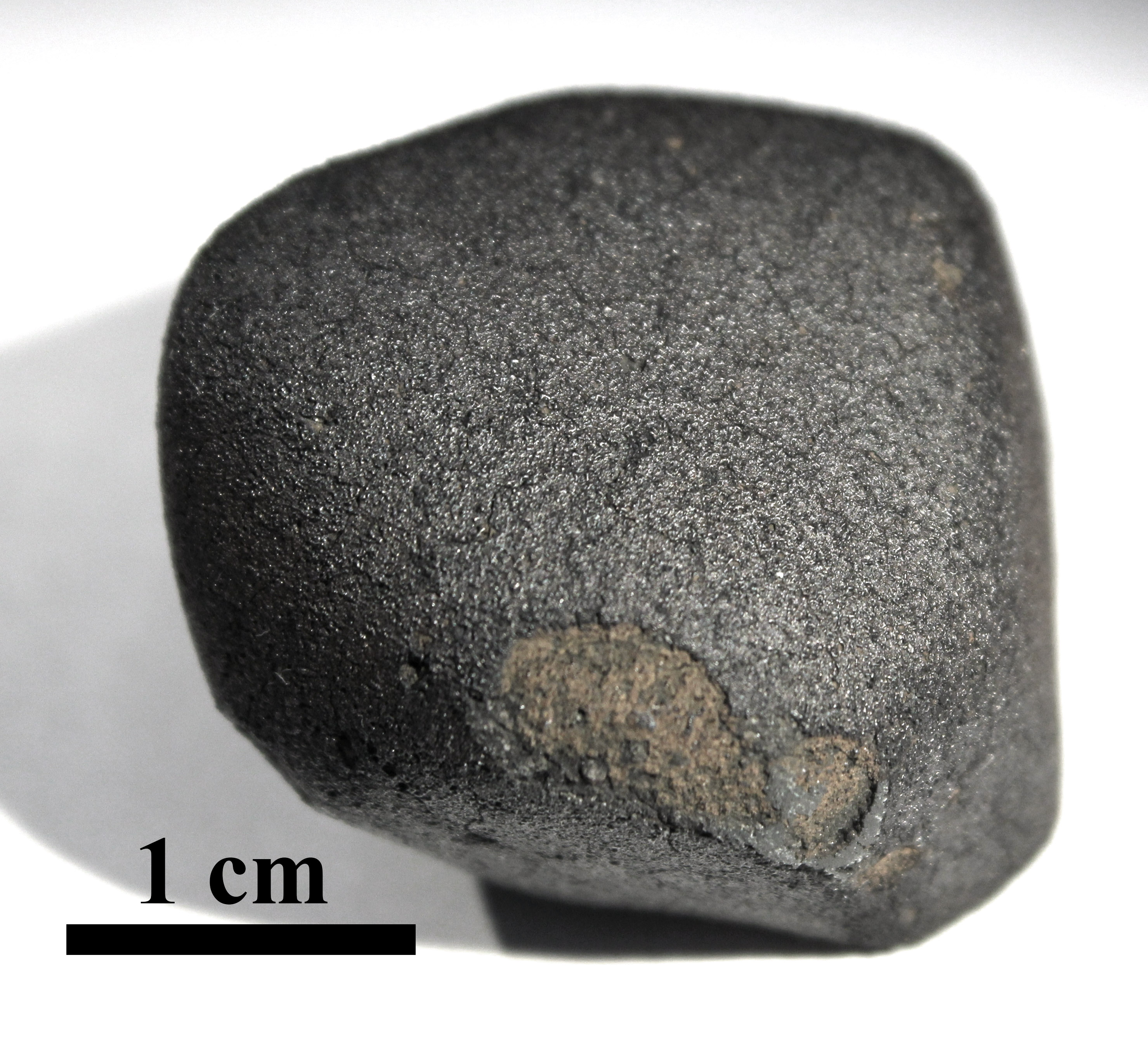
A fireball in the sky, accompanied by a bang, amazed hundreds of eyewitnesses in northern Germany in mid-September last year. The reason for the spectacle was a meteoroid entering the Earth’s atmosphere and partially burning up. One day after the observations, a citizen in Flensburg found a stone weighing 24.5 grams and having a fresh black fusion crust on the lawn of his garden.
Dieter Heinlein, coordinator of the German part of the European Fireball Network at the German Aerospace Center in Augsburg, directly recognized the stone as a meteorite and delivered the rock to experts at the “Institut für Planetologie” at Münster University (Germany). Prof. Addi Bischoff and PhD student Markus Patzek have been studying the stone mineralogically and chemically ever since. About 15 university and research institutes in Germany, France, and Switzerland now take part in the science consortium.
The first research results show that the meteorite “Flensburg,” named after the location of the fall, belongs to an extremely rare type of carbonaceous chondrites.Thus, these types of early parent bodies can be regarded as possible building blocks of the Earth that delivered water.
“The meteorite of Flensburg belongs to an extremely rare meteorite class and is the only meteorite fall of this class in Germany proving that 4.56 billion years ago there must have been small bodies in the early solar system storing liquid water. Perhaps such bodies also delivered water to the Earth,” Addi Bischoff said.
https://www.uni-muenster.de/news/view.php?cmdid=10841







Recent Comments